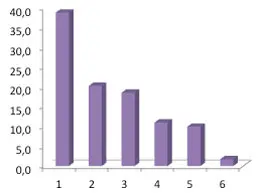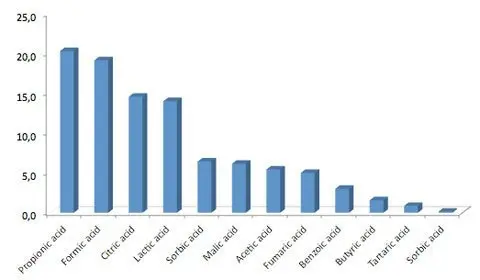Improving living standards in developing countries and an increase in the worldwide population have resulted in a steadily increasing demand for poultry and pork meat
This, together with the EU ban of antibiotics to secure the supply of safe food, is expected to result in an increased demand for animal feed additives. The EU ban has increased attention on acidifiers, as they are the next most adequate alternative to the use of antibiotics.
A Biomin report states, however, that the market seems to be shifting more from the usage of pharmaceutical products to the usage of natural feed ingredients, in part driven by regaining consumer’s trust in animal products following a number of food scares worldwide.
Single organic acids have been used as feed preservatives for a long time. The most popular single acids used are formic and propionic acid. The usage of organic acids as feed additive started to become popular in the 1990s and research on the usage of acidifiers was boosted in the late 1990s and the beginning of 2000 due to the upcoming ban of antibiotics within the EU. Research done on the usage of organic acids as feed additive promptly showed that using organic acid blends consisting of various organic and inorganic acids instead of single organic acids enhance positive effects above those that can be achieved by using single acid products. Therefore, most organic acid based products contain organic acid blends instead of using single acids to exert even stronger effects on animal performance. Out of a selection of nearly 300 products currently available on the market, only around 38 per cent are based on a single acid. Most products are based on organic acid blends containing two or three acids, while a combination of more than three products is not very common (Figure 1).
Numerous organic acids besides formic and propionic - the most commonly used acids - are used as shown in Figure 2. However, the most commonly used besides formic and propionic acid are citric and lactic as well as sorbic, malic, acetic and fumaric acid, while benzoic, butyric, tartaric and sorbic acid are not commonly used. However, the effects which can be seen when using organic acids highly depend on which organic acid is used and at which inclusion level the acids are used. Furthermore, for preserving purposes, inclusion levels of organic acids are in general lower than for performance promotion.

Figure 1: Number of acids combined within a selection of almost 300 products
(distribution in per cent)

Figure 2: Organic acids used
(distribution in per cent)
The overview of some acidifier products currently available on the market clearly demonstrates the importance of acidifiers within the market. A lot of work has gone into making acidifying products more powerful and using possible synergistic effects by including various other substances within acidifying products.
Care must be taken, however, to ensure that real synergistic effects are achieved by combining acid based products with substances with a different mode of action or a different site of action. Furthermore, possible antagonistic effects have to be ruled out when combining organic acids with other substances, otherwise, economical benefits might be put on jeopardy.
For the full Biomin report on organic acid based products, go to: www.biomin.net/en/knowledge-center/articles/articles-details/article/organic-acid-based-products-a-market-evaluation-and-technical-comment







